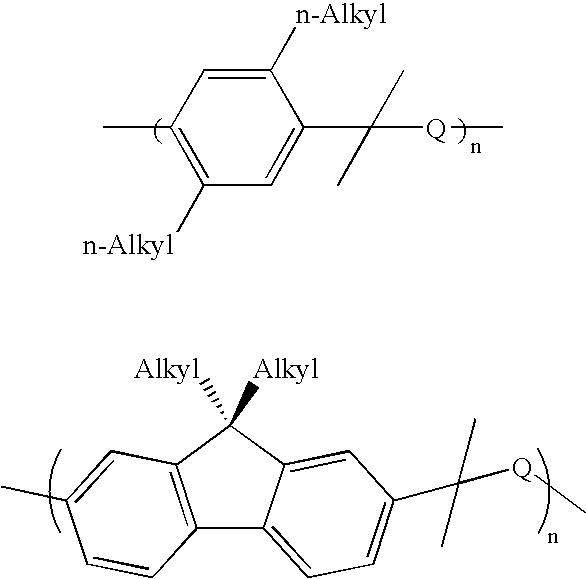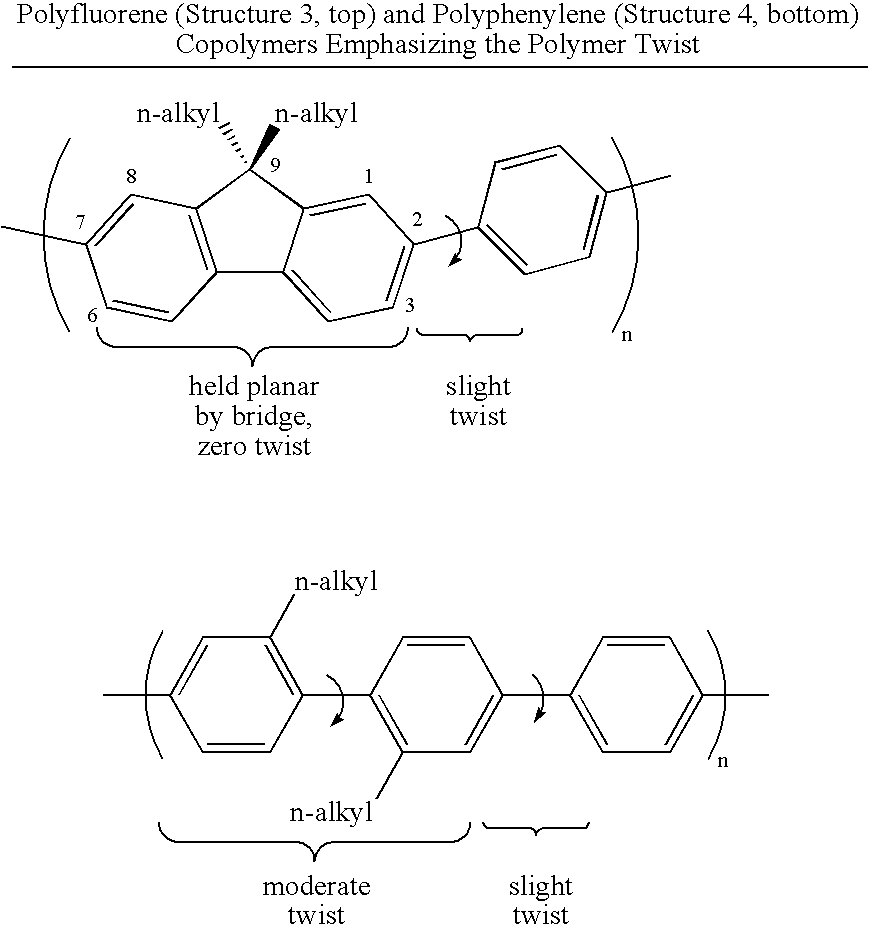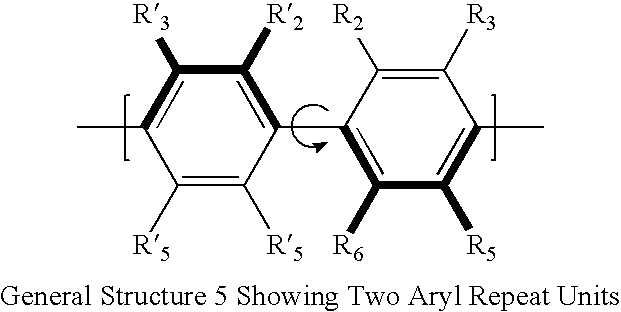High Bandgap Arylene Polymers
a technology of arylene polymer and high bandgap, which is applied in the direction of group 3/13 element organic compounds, group 5/15 element organic compounds, and conductors, etc., can solve the problems of reducing the brightness of oleds and p-oleds as affecting the commercial application of arylene polymer, and reducing the brightness of oleds and p-oleds. a function of time, so as to
- Summary
- Abstract
- Description
- Claims
- Application Information
AI Technical Summary
Benefits of technology
Problems solved by technology
Method used
Image
Examples
Embodiment Construction
[0013]One object of the present invention is to provide a blue emissive polymer with a long lifetime. The lifetime to half brightness starting at 100 cd / m2 should be greater than 1,000 hours, preferably greater than 2,000 hours, more preferably greater than 5,000 hours, even more preferably greater than 10,000 hours, and yet more preferably greater than 20,000 hours. P-OLED devices are often tested at higher initial brightness as an accelerated ageing test. The lifetime to half brightness starting at 1,000 cd / m2 should be greater than 100 hours, preferably greater than 200 hours, more preferably greater than 500 hours, even more preferably greater than 1,000 hours, and yet more preferably greater than 2,000 hours.
[0014]While not wishing to be bound by theory, the short lifetime of current state-of-the-art blue emissive polyphenylenes and bridged polyphenylene is likely due to the polymer serving as the emissive center. If the polymer itself has the lowest lying singlet level, then i...
PUM
| Property | Measurement | Unit |
|---|---|---|
| mol % | aaaaa | aaaaa |
| brightness | aaaaa | aaaaa |
| brightness | aaaaa | aaaaa |
Abstract
Description
Claims
Application Information
 Login to View More
Login to View More - R&D
- Intellectual Property
- Life Sciences
- Materials
- Tech Scout
- Unparalleled Data Quality
- Higher Quality Content
- 60% Fewer Hallucinations
Browse by: Latest US Patents, China's latest patents, Technical Efficacy Thesaurus, Application Domain, Technology Topic, Popular Technical Reports.
© 2025 PatSnap. All rights reserved.Legal|Privacy policy|Modern Slavery Act Transparency Statement|Sitemap|About US| Contact US: help@patsnap.com



